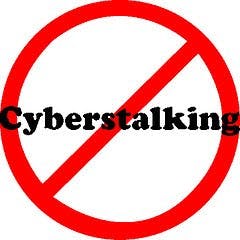By Andrea E.M. Stone
The popularity of various social media channels certainly complicates issues for HR managers these days, creating a need not only for them to remain up to date on the latest technologies but also to ensure that policy manuals are updated to reflect current issues and modes of communication.
Take sexual harassment, for example. Despite all the efforts by various governmental agencies to crack down on harassment and bullying in the workplace, they still exist — and now with a new twist because the harassment is not just physical and verbal anymore; it has evolved into the cyber world.
A recent government study, in fact, indicated that as much as 23 percent of all workplace harassment is now in the form of inappropriate texts, emails, videos or other cyber communications. Cyber sexual harassment presents a new set of challenges because of the speed and ease with which rumors, taunts and slurs can be disseminated to the target employee through social media.
Cyber harassment leaves a written trail
Cyber sexual harassment may start off innocently. Perhaps an employee forwards an email joke with sexual content that another employee finds insulting. In more extreme cases, the employee may become what is known as a cyber stalker, continually sending messages via email, text or an instant message platform to another employee requesting dates or communicating lewd messages.
In the past, sexual harassment was an accusation that was relatively difficult for employees to prove as it was often one employee’s word vs. another’s. This is not true with cyber sexual harassment, because a written, permanent record of the harassment now exists. This type of e-trail documents not only the tone and severity of the harassment, but also the frequency with which it occurs.

In order to help avoid costly and embarrassing litigation, it is critical that employers are pro-active in preventing such abuse from happening in the workplace in the first place. Employers should provide specific policies addressing sexual harassment, which include defining appropriate use of email, company computer systems and electronic technology usage.
Further, employers should review and discuss such policies with all employees, making it explicitly clear that harassment will not be tolerated. Moreover, employers should have open communication with their employees, creating an environment in which employees feel free to raise concerns and are confident those concerns will be addressed.
Keeping up with changing tech trends
Finally, employers should establish a transparent complaint process through which management responds immediately and appropriately to the employee complaint. This duty may include investigating an employee’s virtual comment made in his/her own time about a co-worker if the employer has knowledge of the behavior.
For instance, in Blakey v. Continental Airlines, the Court indicated that a plaintiff can establish an actionable claim for harassment based upon electronic communications made outside the workplace if the electronic medium would be “the equivalent of a bulletin board in the pilot’s lounge.” In Blakey, defamatory and sexually harassing material was posted on an electronic bulletin board, which the employer had notice of, and failed to appropriately investigate the behavior.
As technology continues to change, employers need to make sure their policies and protocols change accordingly to keep up with the latest trends, as well as the latest regulations. Always consult legal counsel before making any major changes to employee handbooks and be certain to enforce anti-harassment policies (as well as all other employment policies) consistently to avoid unnecessary liability.
